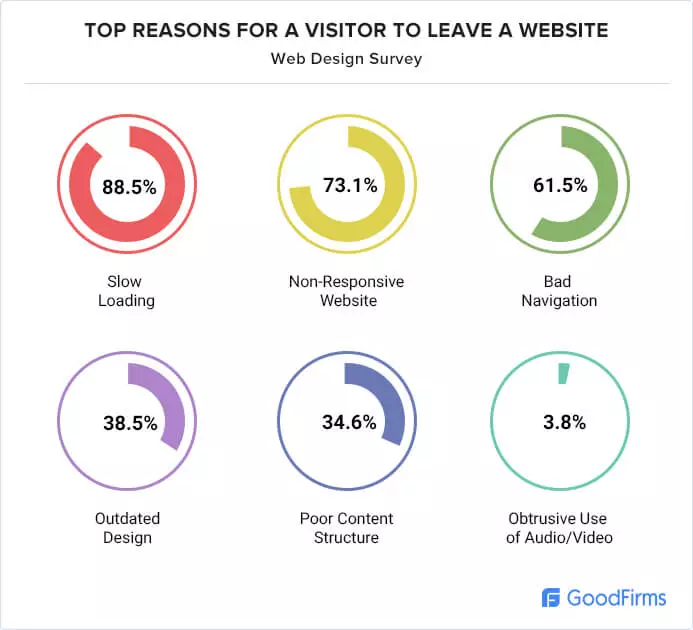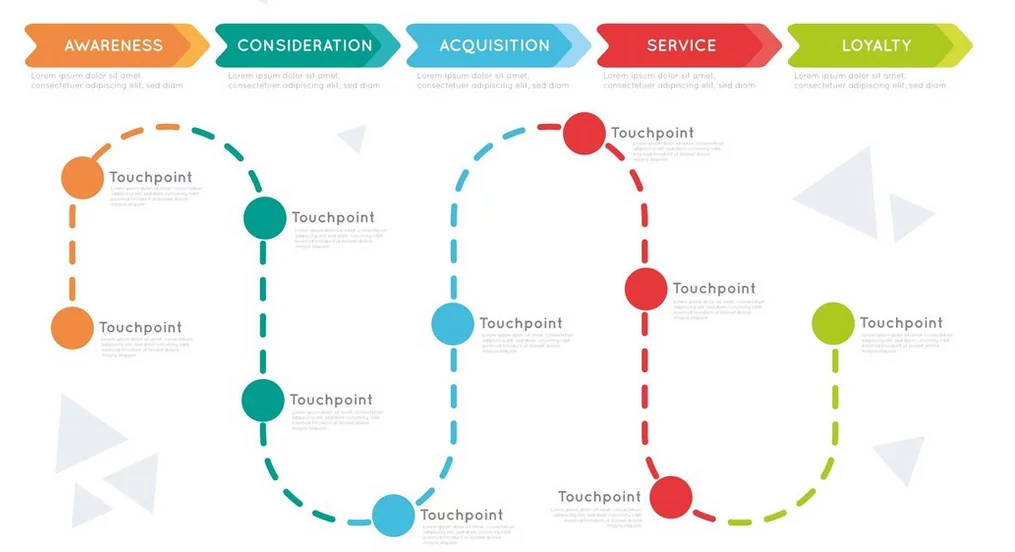In the world of website ownership, your visitors and customers take center stage. Whether you’re managing a WordPress website or running a WooCommerce e-store, catering to your audience’s needs and understanding their behavior is paramount. While we can’t precisely read their minds, there are powerful online tools available that come pretty close to performing this seemingly magical feat.

Why Understanding User Behavior Matters

- Enhanced User Experience: Understanding how users interact with your website helps in improving their overall experience. When users find what they’re looking for easily and have a seamless experience, they are more likely to stay on your site, engage with your content, and return in the future.
- Optimized Content: By analyzing user behavior, you can identify which content, products, or services are the most popular and which ones need improvement or more promotion. This information helps you tailor your offerings to meet the needs and preferences of your audience.
- Conversion Rate Optimization: Knowing how users navigate your site can provide insights into where they drop off or abandon their journey. You can use this information to optimize your conversion funnel, leading to higher conversion rates, whether that’s making a purchase, signing up for a newsletter, or any other desired action.
- Content and Marketing Strategy: Understanding what your audience likes and dislikes can inform your content creation and marketing strategies. You can create content that resonates with your audience and target them more effectively through marketing campaigns.
- Personalization: User behavior data enables you to offer a more personalized experience. For example, e-commerce sites can recommend products based on what a user has viewed or purchased before. This personalization can significantly increase engagement and sales.
- Improved SEO: Search engines value user engagement. If your website provides a positive user experience and keeps visitors engaged, search engines are more likely to rank it higher in search results, potentially driving more organic traffic.
- Customer Retention: For e-commerce and subscription-based businesses, understanding user behavior is essential for retaining customers. By continuously improving the user experience based on feedback and behavior data, you can reduce churn and build customer loyalty.
- Product Development: If you’re developing new products or features, understanding user behavior can guide your decisions. You can prioritize features that users have shown an interest in, improving your product’s chances of success.
- Competitive Advantage: Websites and businesses that actively analyze and respond to user behavior gain a competitive edge. They can adapt more quickly to changes in user preferences and needs, staying ahead of the competition.
- Data-Driven Decision Making: Using data on user behavior allows you to make informed decisions. Instead of relying on guesswork, you have concrete information to base your strategies on, making your efforts more effective.
Tools to Understand User Behavior:
1. Google Analytics

Our top recommendation is Google Analytics, a widely acclaimed and versatile tool that assumes a central role in the comprehensive analysis of websites. Google Analytics equips you with a diverse set of capabilities to glean invaluable insights into visitor behavior through various means, and it can be effortlessly integrated into your WordPress site through plugins like MonsterInsights or Analytify.
Here’s an in-depth look at the key features of Google Analytics and how it can empower you:
- Audience Profiling: With Google Analytics, you can delve deep into understanding your website’s audience. This includes identifying their geographic location, age group, and the devices they employ to access your content. For instance, if you’re managing a travel blog, Google Analytics might unveil that the majority of your visitors are young adults from the United States who predominantly use smartphones to access your site. This data serves a dual purpose: it not only enhances your understanding of your audience but also enables you to tailor your content to cater to their preferences.
- Traffic Sources: This tool provides invaluable insights into how people discover your website. You can discern whether they arrive via social media, organic search results, sponsored advertisements, or other sources. This critical information serves as the foundation for fine-tuning your content and marketing strategies. For instance, if you discover that a significant portion of your traffic is derived from organic search, you may decide to invest more in search engine optimization (SEO) to enhance your website’s visibility.
- Page Performance: Google Analytics serves as your guide in pinpointing which sections of your WordPress website attract the most visits and how much time visitors spend on these pages. For instance, you might find that your product pages are particularly popular, while visitors spend less time on your blog posts. With this data in hand, you can focus your efforts on optimizing the performance of underperforming pages and capitalizing on the success of those that receive higher engagement.
- User Actions: In addition to comprehending the origins of your visitors and their engagement with your content, Google Analytics allows you to track specific actions taken by your visitors on your website. These actions may include form submissions, page views, or e-commerce transactions. This feature is particularly valuable for e-commerce websites where understanding the customer journey is paramount. By closely monitoring user actions, you can gain profound insights into the effectiveness of your sales funnel, identify drop-off points, and implement data-driven improvements to enhance the overall user experience and increase conversion rates. It’s an indispensable tool for improving your website’s performance and optimizing your online presence.

2. Online Chat Integration

Incorporating an online chat feature into your WordPress website is a powerful way to establish a direct and real-time communication channel with your visitors. This invaluable resource not only facilitates immediate interaction but also offers a profound opportunity to comprehend your visitors’ needs accurately, thus fostering more accessible and personalized communication.
With the use of online chat tools and plugins, you can achieve the following:
- Provide Real-Time Support: Online chat tools such as LiveChat or Intercom visibly showcase your readiness to assist visitors in real-time. This is particularly effective for e-commerce websites, where potential customers may have inquiries about products, shipping, or services, and they can instantly seek answers without navigating through multiple pages.
- Understand Visitor Needs: Chat conversations offer a direct window into your visitors’ inquiries, revealing what they are searching for and how you can fulfill their specific requirements. For instance, visitors may seek information about product availability, shipping options, or detailed product specifications, enabling you to tailor your responses accordingly.
- Enhance User Experience: By addressing visitor questions promptly and efficiently with the help of tools like Zendesk Chat or Tawk.to, you can significantly elevate the overall user experience on your website. A seamless chat experience can often be the determining factor between a visitor leaving your site and successfully converting into a customer. Moreover, it allows you to provide the level of service and support that today’s online visitors expect.
3. Heatmaps
Heatmap tools are invaluable for gaining insights into visitor behavior and improving website design and content. You can easily integrate these tools into your WordPress site through plugins like Hotjar and Crazy Egg. Here’s a detailed look at the advantages of using heatmap tools:
- Visualize User Engagement: Heatmaps, such as those offered by Hotjar and Crazy Egg, provide a visual representation of where your website visitors focus their attention. This visual data allows you to identify which elements, such as buttons, images, or text, are the most eye-catching. By discerning what aspects of your website receive the most attention, you can optimize their placement and design to enhance user engagement.
- Content Success Analysis: Heatmap tools assist you in assessing the performance of your content by analyzing cursor activity. With tools like Hotjar and Crazy Egg, you can observe where visitors are clicking, giving you valuable insights into which products, articles, or sections of your site are the most popular. This information is particularly beneficial for content strategists and e-commerce businesses, helping them make informed decisions about content emphasis, enhancement, or modification.
- Optimize User Experience: Understanding how users visually interact with your website empowers you to make data-driven decisions to enhance their experience. For instance, if a heatmap reveals that visitors frequently attempt to click on an image that is not currently clickable, thinking it links to a product, you can use this information to make the image a clickable link. This responsive approach to user behavior can lead to a more user-friendly and conversion-optimized website. Heatmap tools, including Hotjar and Crazy Egg, act as a bridge between user actions and website improvements, enabling you to align your site more closely with visitor expectations.
4. A/B Testing

A/B testing, also known as split testing, is a powerful method for optimizing your website and understanding user behavior. This process involves comparing two different versions of a web page to determine which one performs better. A/B testing allows website owners to make data-driven decisions, improve the user experience, and enhance the effectiveness of their online content.
Plugins and Tools:
- Optimizely: A popular A/B testing platform that simplifies the process of running experiments on your website.
- Google Optimize: A free A/B testing and personalization platform offered by Google.
- VWO: A comprehensive A/B testing tool with a user-friendly interface.
5. User Surveys and Feedback Forms

User surveys and feedback forms are invaluable tools for understanding your website’s visitors and improving their experience. This section will explore the process of gathering direct user input, analyzing user feedback, and implementing improvements based on that feedback.
- Gathering Direct User Input
Gathering direct user input is the first step in gaining insights into your audience’s preferences, needs, and opinions. To collect this input effectively, you can employ various plugins and tools designed for creating surveys and feedback forms:
1. WPForms: This WordPress plugin allows you to create customized forms for your site, including surveys and feedback forms. It offers an easy-to-use drag-and-drop interface.
2. SurveyMonkey: A popular survey platform that lets you create, send, and analyze surveys to collect user feedback.
3. Google Forms: Google Forms is a free tool that enables you to create surveys and forms with various question types. It seamlessly integrates with Google Workspace.
- Analyzing User Feedback
Once you’ve gathered user feedback through surveys and forms, the next step is to analyze the data effectively. This involves identifying trends, common issues, and areas where users express satisfaction. To assist with this analysis, consider using tools and plugins tailored for feedback assessment:
1. Hotjar: Hotjar is a powerful tool that provides insights into user behavior through heatmaps, session recordings, and feedback collection. It helps you understand what your users do on your site.
2. UsabilityHub: This platform allows you to conduct usability tests and gather user feedback on design, layout, and content. It provides valuable insights for improving user experience.
3. Qualaroo: Qualaroo offers user feedback solutions, including NPS surveys and on-site surveys. It helps you understand your users’ needs and challenges.
6. Customer Journey Mapping

Customer journey mapping is a crucial process for understanding how visitors navigate your website, identifying pain points, and seizing opportunities to enhance the user experience.
Understanding the visitor’s path on your website is akin to following their footsteps, from the moment they land on your site to their eventual interactions.
- Identifying Pain Points and Opportunities
Identifying pain points and opportunities within the customer’s journey is pivotal for improving user experience. These insights help you address issues and capitalize on areas for enhancement. Here are tools and methods to assist in this process:
1. UserTesting: Platforms like UserTesting.com allow you to gather real user feedback through video recordings. Users provide insights while navigating your site, highlighting pain points and opportunities.
2. Session Recordings: Session recording tools, such as FullStory, capture user interactions on your website. They reveal where users encounter obstacles and enable you to pinpoint areas for improvement.
- Enhancing User Experience Through Journey Mapping
Enhancing the user experience through journey mapping involves implementing changes based on your findings. Once you’ve understood the visitor’s path and identified areas of improvement, you can use various plugins and tools to make enhancements:
1. WordPress Plugins: Depending on your insights, various WordPress plugins can be beneficial. For example, you might install a caching plugin like WP Super Cache to improve page loading times.
2. Heatmap Tools: Heatmap tools like Crazy Egg offer split testing features that enable you to make data-backed design changes.
3. Content Management Systems: If you’re using a content management system (CMS) like WordPress or Joomla, consider exploring themes and templates that are optimized for user experience. WordPress Themes
4. User Feedback Implementation: Based on direct user feedback, you can make targeted changes to your website. For instance, if users frequently request specific features, you can work on implementing them to meet user demands.
7. Social Media Insights

Harnessing the power of social media analytics is vital for understanding the effectiveness of your social media efforts. Several plugins and tools can aid in this process, offering a wealth of data and metrics. Here are some notable ones:
1. Hootsuite: Hootsuite is a comprehensive social media management platform that provides in-depth analytics. It offers insights into engagement rates, reach, follower growth, and the performance of your social media content.
2. Buffer: Buffer is another popular social media management tool with robust analytics features. It helps you track key performance indicators, allowing you to refine your social media strategy based on data-driven insights.
By using these analytics tools and plugins, you can gain a deeper understanding of which social media posts resonate with your audience and make data-backed decisions to optimize your content.

- Tracking Sentiment and Engagement Using Tools
Monitoring user sentiment and engagement is crucial for shaping your brand’s online presence. Several tools can assist in tracking sentiment, mentions, and engagement metrics:
1. Brandwatch: Brandwatch offers sentiment analysis and trend tracking capabilities. It helps you understand how your brand, industry, and competitors are perceived on social media.
2. Talkwalker: Talkwalker is a social listening and analytics tool that enables you to track mentions, sentiment, and trends. It provides valuable insights into online sentiment and engagement metrics, such as likes, comments, shares, and click-through rates.
By utilizing these tools, you can gain valuable insights into user sentiment and engagement levels, allowing you to respond to feedback effectively and enhance your brand’s reputation.
- Integrating Insights into Your Website Strategy with Plugins and Tools
Incorporating social media insights into your website strategy is a strategic move that enhances your online presence. Here are some plugins and tools that facilitate this integration:
1. Shared Counts (WordPress Plugin): Shared Counts is a WordPress plugin that encourages website visitors to share your content on social media. By integrating this plugin, you can extend the reach of your content and engage with your audience more effectively on social platforms.
2. AddThis: AddThis is a versatile tool that offers website tools for sharing, following, and recommended content. It allows you to seamlessly integrate social sharing buttons and encourage visitors to share your content.
Conclusion:
Understanding the behavior of visitors to your WordPress site is essential for enhancing user experiences, optimizing content, and achieving your website’s goals. By employing a combination of tools, plugins, and strategies, you can gain valuable insights into visitor behavior, refine your website, and establish a strong online presence. Remember that user behavior analysis is an ongoing process, and staying attuned to your audience’s needs and preferences can lead to sustained growth and success.
FAQs on User Behavior with WordPress:
What should I do with the insights gained from user behavior analysis?
Insights from user behavior analysis should guide your website optimization efforts. This may include refining content, improving site navigation, enhancing load times, and addressing specific pain points to create a better user experience.
Is it necessary to continuously analyze user behavior on my WordPress site?
Yes, continuous analysis is essential. User behavior and preferences can change over time, so ongoing monitoring allows you to adapt and evolve your website to meet user expectations effectively.
How can I track sentiment and engagement on social media to benefit my website strategy?
You can track sentiment and engagement on social media using tools like Brandwatch and Talkwalker. These tools monitor mentions, sentiment, and engagement metrics such as likes, comments, shares, and click-through rates. By understanding user sentiment and engagement, you can align your website content with your social media audience’s preferences, thereby creating a more consistent online identity.



